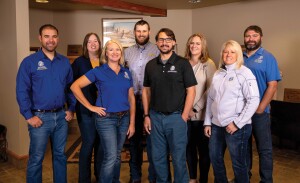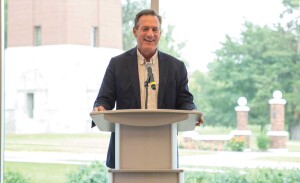It was a historic announcement and a jaw-dropping amount of money.
On Sept. 15, South Dakota State University announced it will receive up to $80 million for the Partnerships for Climate-Smart Commodities Initiative—the largest grant ever received by the university.
Titled “The Grass is Greener on the Other Side: Developing Climate-Smart Beef and Bison Commodities,” SDSU’s project will use the brand-new USDA-NRCS grant to create market opportunities for beef and bison producers who utilize climate-smart agriculture grazing and land-management practices.
The project will guide and educate producers on climate-smart practices most suited for their operations, manage large-scale climate-smart data that will be used by producers to improve decision-making, and directly impact market demand for climate-smart beef and bison commodity markets, according to the September announcement.
But what does that mean? Where will the money go, and what exactly will it be used for over the next five years?
Kristi M. Cammack ’99, project lead and director of SDSU West River Research and Extension, said the funds are being used by SDSU and its partners in three different areas.
“The project is targeted to grazing beef and bison commodities and associated livestock and land-management practices,” Cammack said.

Zach Ducheneaux, administrator for USDA’s Farm Service
Agency, speaks at a September press conference announcing
SDSU as the recipient of an $80 million grant for the
Partnerships for Climate-Smart Commodities Initiative.
Nearly 60% of the total grant funds—half in direct payments and half in benefits—will go to producers to provide them with the funds and services needed to implement climate-smart practices on their operations. That includes planned grazing management, cover crop grazing and seeding with native seeds among other practices. Resources include training, education and providing measurements on their soil.
“A lot of our producers are already doing this, so we’re rewarding them to keep doing them and incentivizing them to incorporate new practices while also bringing in new producers,” Cammack explained. There’s also an emphasis on historically underserved producers, such as women, Native Americans and small-scale producers.
The second part of the grant funds will be used for research, where SDSU is taking the lead.
“We will take soil and other measurements to confirm how these practices impact the land and the environment. We will look at carbon sequestration, soil health and ancillary benefits to wildlife, air and water,” Cammack said.
“We hear a lot about how these practices are good for the environment, but we really need the numbers to showcase that, to help producers understand the value of these practices to their operations and to their products.”
Researchers will also look to develop new climate-smart methods and practices to increase the tools producers have at their disposal.
The final part of the grant is market development.
Cammack said long-term success for the project means creating a market for climate-smart beef and bison—demand for the products either through producers directly or through retailers and corporations, knowing they have the consumer base that wants these products.
“We’re helping create a market that will incentivize producers beyond the life of this grant through increased value of their product.”
Other major partners on the project include Millborn Seeds, Buffalo Ridge Cattle Company, AgSpire, Tanka Fund, Cold Creek Buffalo Company, SDSU Extension, the SDSU Center of Excellence for Bison Studies, the National Bison Association, Texas A&M University, Yard Stick, C-Lock and Adopt-Ag.
Jill Fier






